(Art direction and design: Jean-Dominique Lavoix-Carli)
The first decades of the 21st century present human societies with many challenges. At times, it appears our very civilizations are at stake. Can we create new better-adapted civilizations? What are the alternatives? What can we learn from the works that have examined the history of civilisations?
Between the two world wars of the 20th century, British historian Arnold Toynbee wrote such a masterful history of civilizations in 12 volumes, published in 1934 and 1939 for the first 6 volumes, then between 1954 and 1961 for the last ones (Arnold Toynbee, A Study of History, Oxford University Press, 1934 [tomes 1-3], 1939 [tomes 4-6], 1954 [tomes 7-10], 1959 [tome 11], 1961 [tome 12]). In 1946, D. C. Somervell, also a British historian, published an abridged version of the first 6 volumes (the second part was published in 1957). This is the work we shall use here (D. C. Somervell, A Study of History: Abridgement of Vols I-VI, with a preface by Toynbee, Oxford University Press 1946).
- Niger: a New Severe Threat for the Future of France’s Nuclear Energy?
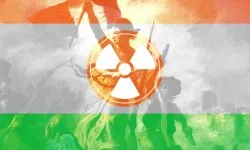
- Revisiting Uranium Supply Security (1)
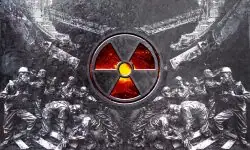
- The Future of Uranium Demand – China’s Surge
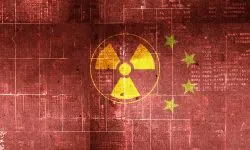
- Uranium and the Renewal of Nuclear Energy
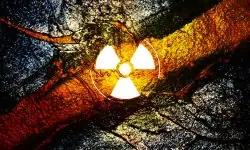
- AI at War (1) – Ukraine
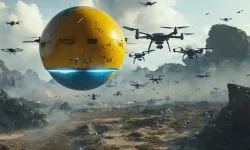
Toynbee’s work was acclaimed when it was published but has long fallen into quasi oblivion, while it was also criticised. Students and researchers mention it, but few have read it, would it be only the abridged version. Yet.
In this series of articles, we present Toynbee’s argument on the life and fate of civilizations, moving from petrification to genesis or disappearance, from genesis to growth or break down, from break down to petrification or disintegration, and finally back to genesis or disappearance. We highlight corresponding examples and cases for our 21st century world and stress lessons we could learn from Toynbee.
After explaining briefly how a new civilization emerges, this first article focuses on one of the two series of factors that are necessary for the genesis of a civilization: challenges.(1)
A brief outline of genesis
For Toynbee, the best unit of analysis to understand history is “societies”, understood as wholes. It is neither nations, states nor nation-states. As examples, Toynbee gives, among others, the Hellenic society, the “Orthodox Christian, the Islamic, the Hindu and the Far Eastern Societies”, etc. (p. 567).
According to him, “civilized societies” or civilizations are born out of “primitive societies”, which had become static. These “higher civilizations” are less numerous but usually far larger than their primitive ancestors. Then, some of these “civilised societies”, in turn, became static and evolved – or not – into newer societies or civilizations. For example, the Orthodox Christian society and the Western Christian society evolved out of the Graeco-Roman or Hellenic society (this does not of course rule out other types of inputs). As another example, the Hindu society evolved out of an Indic society (pp. 35-36, 12-15, 20-21; pp.567-568).
Hence, Toynbee argues that, in the course of their lives, civilizations tend to petrify, to become static. Then, pressures and challenges may provide the static society with a stimulus that allows to overcome petrification and to become dynamic anew. In that case, we have the creation of a new civilization, a genesis. This process, however, is not a fatality. The initial civilization may fail to answer properly the challenge faced and succumb (pp. 48-163).
As highlighted by the historian, being able to move out of petrification towards dynamism depends upon two factors, or rather a factor and a process (Ibid.). First, a challenge that creates a pressure need to be overcome. The existence of this challenge and its strength will determine the outcome: i.e. genesis of a new civilization or disappearance of the petrified civilization (Ibid.). The second factor (forthcoming article) is the process of response to the challenge. Its success or failure in eliciting the proper answer will lead to various outcomes.
Challenges and their strength
The “Golden Mean”
First of all, Toynbee points out that the challenges and pressures must be neither too weak nor too severe, but have a medium intensity he calls the “Golden Mean” (pp. 140-163).
For example, letting aside for now an in-depth discussion on the state of our civilization, or civilizations(1), if we think about today’s climate change’s immense challenge, we may imagine that the initial impacts brought about by the first 0.5°C of temperature rise above pre-industrial average were not enough to constitute a pressure for stimulus leading to change.
Unfortunately, the cumulated effects over time of a certain level of temperature rise – to be determined – might also prove too much.
In between, we may hope that a “golden mean” temperature increase will be achieved, which will generate the ideal stimulus.
Which “Golden Mean”?
One of the difficulties here resides in evaluating the strength of the pressure, when looking at the future. In our example, which level of temperature rise would constitute too severe a pressure and which level would be the “Golden Mean”?
It would appear logical that the strength of the pressure varies according to previous achievements of a civilization. What may have been a perfect challenge for an early civilization, may not be anymore a challenge at all for current civilizations.
For example, facing a temperate climate with four seasons forces inhabitants, for instance, to anticipate and plan ahead, to develop storage facilities to be able to survive during winter and early spring months. However, for early 21st century civilizations, a temperate climate does not constitute anymore a challenge with related strong stimulus. This will be true as long as we can benefit from the thousands of years of achievements across all fields that allowed us to overcome the pressure stemming from a temperate climate. Nonetheless, we should neither discard nor forget this initial challenge. Indeed, current civilizations could, because of other challenges and processes, internal and external, end up losing what they achieved. In that case, the initial challenge that was not operating anymore would become salient again.
What has been close to happen in Europe during the winter 2022-2023 could constitute an example for this case. Faced with skyrocketing electricity prices owing to the war in Ukraine, the obvious and usual way to handle both winter time and goods production suddenly became far from being that obvious and led to series of challenges long forgotten.
What could be happening with the impacts of climate change, for example in terms of extreme weather events, would, similarly, question the way we have learned to handle temperate climate after millenia of experience. First, the old temperate climate may be gone, which would question the relevance of experience and achievements. Second, the habit to “just rely” on consumer goods being always available in shops and supermarkets may become obsolete, if and when supply chains break down. In that case, as consumers have been so spoiled most only know how to shop, then the ways of life allowing for survival will have to be reinvented.
As another example, following the end of World War II then of the Cold War, many came to believe that war on the territory of geographical Europe had become impossible. The war in Ukraine showed us otherwise. War does not disappear because we have a long period of peace nor because ideology wants it. The COVID 19 pandemic is also another example of a past known pressure that initially was met with disbelief, because it was unthinkable our 21st century world would know such a thing as a global pandemic (e.g. Helene Lavoix, “The Coronavirus COVID-19 Epidemic Outbreak is Not Only about a New Virus“, RTAS, 12 Feb 2020). It nevertheless took place.
Even though for a very long time a challenge and pressure have existed at an extremely low level of intensity, it does not mean that they are gone.
Meanwhile, the intensity of the challenge is dynamically relative to the achievements of a civilization.
Furthermore, we may deduce from Toynbee’s argument that the series of challenges and pressures that befall a society at the same time must not be cumulatively too severe nor too weak.
For example, could the early 21st century civilizations face at the same time the impacts of climate change with 1.5°C of temperature rise, a world war and a pandemic more deadly than the COVID 19?
Five types of challenges and pressures
Having highlighted the importance of the relative strength of the pressure, Toynbee identifies five types of challenges that may lead to a stimulus capable of generating an answer that lifts a civilization out of its petrification. The stimulus and resulting response, then, should allow the society to become dynamic again, developing highest achievements.
Hard countries – climate change again
First, we have “hard countries”, i.e. a geographical and ecological environment that is hard and challenging for human beings, yet within the bounds of the “Golden Mean” (pp.88-98).
We can use again the example given above of climate change. In that light, and assuming we, as a species, survive, climate change and its impact on our environment could be seen as an opportunity. This would demand, however, that we make sure to keep the challenge of the resulting environment within the “Golden Mean”. In that case, we could create new, better or higher civilizations.
New grounds – the case for outer space
Second, Toynbee stresses the importance of “new grounds”. He means that for a society to have to live or travel lengthily in new unfamiliar environments, in new spaces, generates challenges that are fruitful if their strength is located within the “Golden Mean” (pp. 99-107).
A 21st century example of such a “new ground”s” could be outer space. The efforts endeavoured by humanity to discover and understand outer space and then to travel there whatever the goal correspond perfectly to Toynbee’s challenge.
Recent feats such as China’s successful testing in August 2023 of science experiment facilities aboard China’s Tiangong space station completed at the end of 2022, India’s landing on the south pole of the Moon on 23 August 2023, the American NASA’s OSIRIS-REx mission return with asteroid Bennu samples on 24 September 2023, and Chinese-led or American-led plans for unmanned and manned lunar exploration and exploitation are concrete examples of the efforts taking place in this “new ground” (Deng Xiaoci, “China space station experiment facilities complete testing, ready to support large-scale research projects“, Global Times, 29 August 2023; Mariel Borowitz, “India’s Chandrayaan-3 landed on the south pole of the Moon − a space policy expert explains what this means for India and the global race to the Moon“, The Conversation, 24 August 2023; Reuters, “China offers to collaborate on lunar mission as deadlines loom“, 3 October 2023).
Alongside these material endeavours, we find attempts to regulate human activities in space or part of it, starting with the Outer Space Treaty of 1967. On 13 October 2020, the American launched the Artemis Accords (“Principles for Cooperation in the Civil Exploration and Use of the Moon, Mars, Comets, and Asteroids for Peaceful Purposes”). Germany became the 29th nation to sign it in September 2023. Perceiving the Artemis Accords as a way to project American domination and order in space, China countered with an all-encompassing “Proposal of the People’s Republic of China on the Reform and Development of Global Governance“, notably “to prevent new ‘new frontiers’ from militarization caused by major power competition (Yang Sheng and Zhang Yuying, “China issues proposal on reform, devt of global governance“, 13 September 2023, Global Times). Incidentally, the Chinese new frontiers include “The deep sea, polar regions, outer space, cyberspace and digital technology and artificial intelligence (AI)” (Ibid.). They may all be seen as “new grounds”. Note that the Chinese new frontiers almost perfectly correspond to what we call extreme environments (see portal to Extreme Environments Security).
Activities in outer space and attempts at regulating them start outlining an original response to the challenge of outer space for human beings. That early answer could have the potential to pave the way for a new civilization, following Toynbee’s “new grounds” type of challenge.
Sudden blow – The other side of the military defeat of enemies
According to Toynbee, a “sudden crushing defeat” can “generate a stimulus for the defeated party.” The author refers to war (pp. 108-111).
One of Toynbee’s examples is the rise of Prussia. Following the defeats of Jena (1806) and notably the treaties of Tilsit (1807) during the Napoleonic wars, Prussia found the energy and way to totally regenerate its army, administration and educational system. As a result, it became far stronger and “the chosen vessel for the new wine of German nationalism” (p.110).
Tentatively, a potential example for the early 21st century of a “sudden crushing defeat” could be, for Armenia, the dissolution of the separatist government of Nagorno-Karabakh according to a 20 September 2023 agreement, and the resulting massive exodus, after Azerbaijan’s lightning offensive on 19 September 23 (e.g. France 24 “Nagorno-Karabakh announces dissolution as more than 75,000 flee separatist enclave“, 28 September 2023; Masha Gessen, “The Violent End of Nagorno-Karabakh’s Fight for Independence“, The New Yorker, 29 September 2023). Without hindsight though, it is impossible to know if we are indeed in a case relevant for Toynbee. What we may say is that a potential is there, despite the tragedy.
As another example, should a war take place between China and the U.S., the victorious country might well give its enemy a stimulus for achieving a newer and better civilization.
Similarly, should Ukraine and NATO defeat Russia in Ukraine, then the result could be to provide Russia with a stimulus – according to the strength of the pressure – to launch a string of further in-depth reforms that would potentially make it far stronger. The alternative holds also potentially true, should Russia defeat Ukraine and NATO.
Continuous external pressure – Another look at migrants’ routes?
With the idea of a “continuous external pressure”, Toynbee refers to people who are inhabiting the margins or frontiers areas of a territory and, as a result, are submitted to constant pressures and attacks from other peoples. According to him, this type of constant pressure generates the stimulus necessary for a better development (pp. 111-125).
Tentatively, even though the circumstances are far from being similar to those described by Toynbee, we may imagine that areas constantly confronted to flows of migrants may constitute a kind of 21st century frontiers areas.
In the case of the Mediterranean sea, the frontiers areas would be largely located as displayed on the Reliefweb/OCHA map below, not only at arrival but also departure points:

Similarly, in the Americas, frontiers areas could be found along the main routes, their cities and border points (see maps below from the IOM, Migration Trends in the Americas, Global Compact for Migration, Feb 2023 and March June 2023):


Penalizations
For Toynbee, the factor he names “penalizations” refers to groups of people who have suffered centuries of exclusion at the hand of others. He states that this “penalization” may lead those who suffer it to put exceptional energy and creativity in the only avenues open to them. In turn, this may lead to the development of higher and newer societies or civilizations (pp. 125-139).
One of the examples Toynbee provides is the “hordes of slaves” imported by Rome in the last two century B.C. out of which arose the “Freedmen” as well as Christianity (pp. 126-128; p.572).
In the 21st century, everything being equal, we may wonder if those who were left behind during now more than a century of urbanization consequent to industrialisation may not be considered as somehow “penalized.” Possibly, the rural migrants could also be considered as “penalized” in Toynbee’s meaning. However, in this later case, as rural migrants adapt and integrate, the penalization may not last long enough to truly create the conditions of pressure for stimulus described by Toynbee.
As another example, peoples who have yet to be recognised as such and did not succeed in getting a state on their own, such as, for example, the Kurds, who are spread over four countries (Iran, Iraq, Turkey, Syria), could also be candidates, potentially, for experiencing the penalization factor of Toynbee. The disparity of the Kurdish situations according to each of the four countries where they live shows the difficulty of applying the idea of “penalization” to a “people” without a thorough analysis. Beforehand, specific analyses should be done accounting notably for the birth and development of an “imagined community”, to borrow from Benedict Anderson (Imagined Communities, Verso: 1991). Nonetheless, the interesting ideas that were promoted by the Syrian Kurds in terms of economic and political development are a signal of the novelty and energy that tragic pressure may generate (see H. Lavoix, “The Kurds in Syria – State-Building, New Model and War“, 22 May 2017).
To summarize, Toynbee presents five types of challenges which, according to the strength of the pressure generated, may create a stimulus that favours the creation of new civilizations. In the first decades of the 21st century, such challenges are present and often acute, globally and locally. How can peoples build upon the stimulus triggered and turn it into an adequate response thereby building new civilizations? This is what we shall explore with the second article of this series.
Notes
(1) In a forthcoming article, we shall discuss what, in the 21st century, should be called a ‘civilisation’ or a ‘society’, in the manner of Toynbee. We will also look at the state of some of our twenty-first century civilisations.







Leave a comment